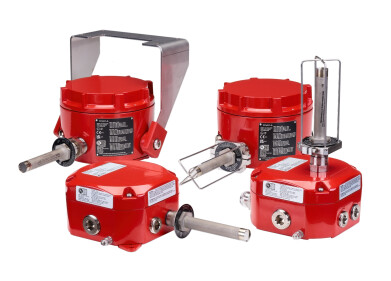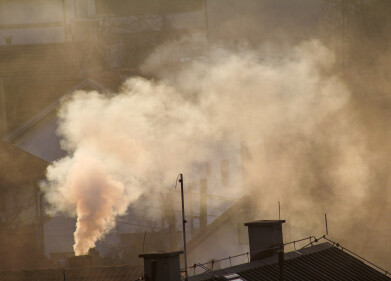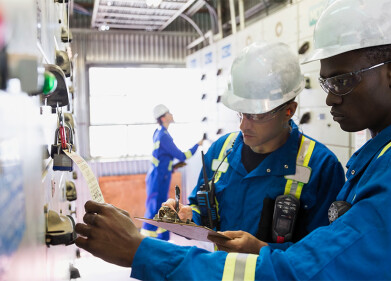Safety
Optical Gas Imaging Camera Helps Improve Polymerisation Process Safety
May 30 2012
FLIR Systems (France) has released an applications report and video that demonstrates how process operators at the Borealis high-pressure, low-density polyethylene (LDPE) plant in Stenungsund, Sweden are using a FLIR GF306 optical gas imaging camera to detect potentially dangerous gas leaks.
In the LDPE production process - ethylene, a highly flammable hydrocarbon, is converted into polyethylene in a high-pressure polymerisation reaction.
Before the purchase of a FLIR GF306 optical gas imaging camera - Borealis used gas 'sniffers' - devices which measure the concentration of a certain gas in one single location and generate a concentration reading in parts per million (ppm). An operator of the FLIR GF306 stated "The main advantage of the optical gas imaging camera is that it provides you with the possibility to detect gases in real-time visually. Whereas sniffers just give you a number, an optical gas imaging camera allows you to detect gas leakage anywhere within the field of view of the camera. This speeds up the inspections considerably".
Now that Borealis have a FLIR GF306 optical gas imaging camera they are able to do a quick scan at every start-up. With a quick scan - process operators are able to scan approximately 80% of the entire plant in about thirty minutes. To do the same task with gas sniffers would need a team of ten people working for two full days.
The FLIR GF306 optical gas imaging camera contains a cooled Quantum Well Infrared Photodetector (QWIP) that produces thermal images with a resolution of 320 x 240 pixels at a thermal sensitivity of 25 mK (0.025 °C). The gas visualtisation functionality of the FLIR GF-Series optical gas imaging cameras is based on infrared absorption. Gases absorb electromagnetic radiation in certain parts of the spectrum. FLIR GF-Series optical gas imaging cameras contain a spectral filter, a focal plane array and optics that are specifically tuned to such a part of the spectral range. Since the gas absorbs infrared radiation it blocks radiation from objects behind the gas, causing gas leaks to show up as either a black or a white plume in the thermal image, depending on whether the user opted for the 'white hot' or the 'black hot' settings.
Digital Edition
PIN 25.5 Oct/Nov 2024
November 2024
Analytical Instrumentation - Picturing Viscosity – How Can a Viscometer or a Rheometer Benefit You? - Sustainable Grease Formulations: Evaluating Key Performance Parameters and Testing Method...
View all digital editions
Events
Nov 26 2024 Paris, France
Nov 26 2024 Amsterdam, Netherlands
Nov 27 2024 Istanbul, Turkey
Biogas Convention & Trade Fair 2024
Nov 27 2024 Hanover, Germany
Dec 03 2024 Dusseldorf, Germany



















